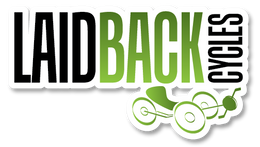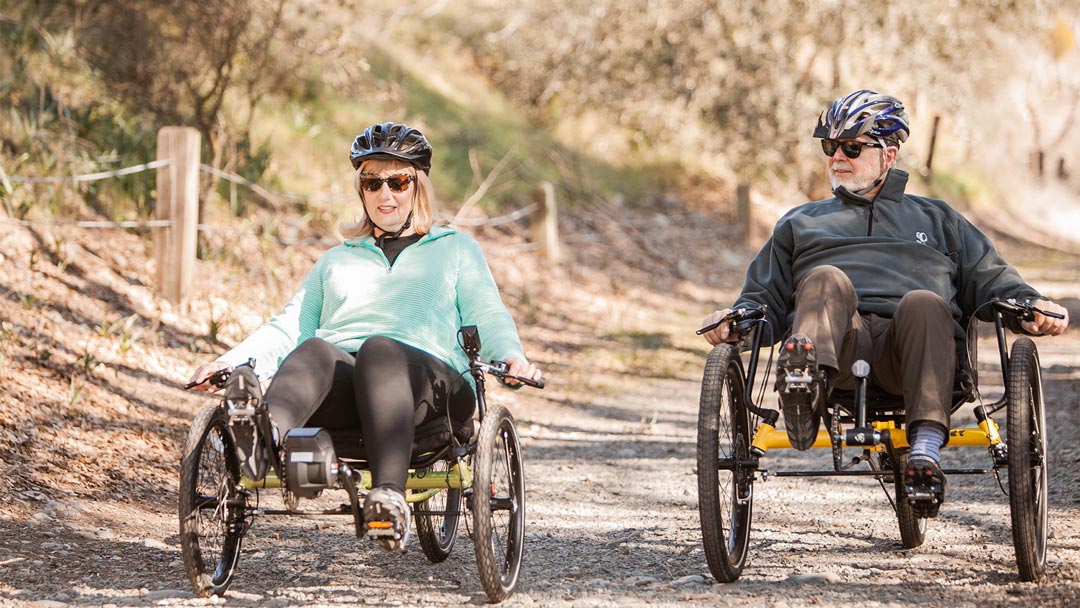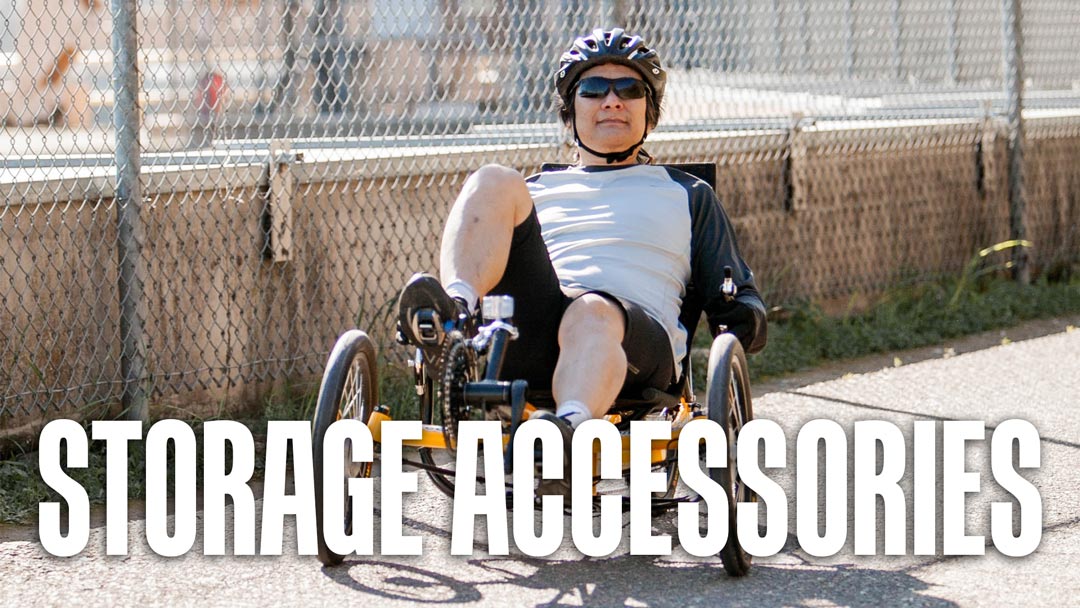Classes of Electric Trikes in California
While it’s hard not to get pretty psyched about the opportunities e-trikes offer for avid trikers, it’s important to understand e-trikes can introduce new challenges when using California roads and trails. In fact, with so many people opting for e-bikes as their preferred mode of transportation in California, a rebate was actually introduced to encourage people to invest in this eco-friendly option. However, that’s helping to put more e-bikes and e-trikes on our roads and trails.
As a result, the California Highway Patrol is set to develop safety standards for e-bike riders based on new legislation. The new guidelines are expected to be introduced by September 2023, focusing on everything from e-bike safety to the rules of the road, with some emergency maneuver skills thrown in for good measure. The new guidelines will hopefully reduce the number of e-riders out there who don’t follow the rules, reducing the risk of accidents and injuries.
This brings us to the topic of this article, the classes of e-trikes and how they apply to the use of local roads and trails. Let’s take a look at the classes, as well as e-trike best practices, to keep you and fellow riders safe on the trails.
The Three Electric Trike Classes
As of 2020, there are three classes of e-trikes/bikes:
Class 1
A “Class 1 electric bicycle,” or “low-speed pedal-assisted electric bicycle,” is equipped with a motor that only functions when you pedal. As well, the trike can only reach 20 miles per hour (MPH) before it stops producing that boost of power. They must have a motor under 750W and be throttle free to align with California rules. The TerraTrike’s E.V.O. (electric vehicle option) is a perfect example of a Class 1 electric assist trike. It meets all the requirements, making it a popular choice for our customers.
With a 740W motor, no throttle, and a maximum of 20 mph, it meets the requirements of California laws and is actually not even considered a motorized vehicle. That means if you see trails with signs prohibiting the use of trails by Motorized Vehicles, you can safely continue on unless the sign states more specific trail use rules.
Class 2
A “Class 2 electric bicycle,” or “low-speed throttle-assisted electric bicycle,” does not require pedaling to use the motor. They also don’t provide assistance once they reach 20 mph. They are limited to motors below 750W but do have a throttle.
Class 3
A “Class 3 electric bicycle,” or “speed pedal-assisted electric bicycle,” has a motor that provides assistance only when the rider is pedaling and stops providing assistance when the bicycle reaches 28 mph. Class 3 bicycles are limited to below a 750W motor, have no throttle, and are equipped with a speedometer. Pedelec and moped-style bikes fall into this category. This e-trike also meets the requirements of California’s e-bike rules as it goes to the maximum speed requirement of 28 mph.
Common Sense and E-Trike Speeds
If you shop around, you can find e-bike manufacturers that produce e-bikes that reach up to 60 mph. In our minds and the minds of California lawmakers, this is not an e-bike and becomes something more like a moped or mini motorcycle. If you choose an e-trike that allows you to go this fast, keep in mind you’re exceeding the 28 mph max in California, which means you’re getting into dangerous territory regardless of where you ride.
You’re kind of pressing the rules to work in your favor, and although chances are you won’t get caught zooming down local trails, you’re crossing the line between having fun and what boils down to common courtesy for your fellow riders and trail users. These types of e-trikes and bikes should never be used in public parks or on local roads as you really are putting yourself and others at risk. You’ll also definitely be breaking the law if you’re opening up the full-speed capabilities. Your reaction times also won’t allow you to avoid unexpected obstacles, which puts you and others at risk for serious injuries.
Safety Tips for E-Trike Riders
With all that said, you can enjoy a much safer e-trike ride with these e-trike rider safety tips:
- Make sure you wear a helmet no matter where you ride.
- To make yourself more visible, use front and rear lights and choose accessories with reflective stickers.
- Whether you are riding night or day, brighter colored, reflective clothing keeps you visible.
- E-trikes are nice and quiet, which means you might sneak up on fellow riders and pedestrians. Install a horn or bell to provide a little warning as you approach. Call out with a friendly “on your left” so people know which way to step to get out of your way.
- Make sure you only use trails and roads that allow electric trikes and stick to the designated bike trails and lanes in your area.
- Keep in mind your lower-to-the-ground position makes it harder for cars and pedestrians to spot you. Ride accordingly, so you’re prepared for drivers, cyclists and pedestrians who come into your path and present potential dangers that lead to accidents.
- Don’t assume parked cars are safe. Watch for sudden vehicle lights that indicate the car is pulling out, as well as car doors that can open into your path.
- Keep an eye on fellow cyclists who can easily miss you and pull out in front of you unexpectedly.
- Until you’re used to using your motor, take potholes and uneven terrain at a slower speed to avoid losing control of your trike.
- Be aware of how your added speed can be interrupted when you hit gravel or wet pavement, and slow down accordingly.
If you follow these e-trike best practices, you are more likely to avoid accidents and injuries. You’ll make the most of your e-trike experience without ruining it for others using California roads and trails. Our team can offer advice on the types of e-trikes available that are California compliant.





